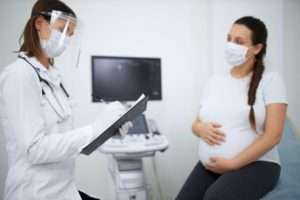COVID-19 Origin and Coronavirus Transmission
A virus is a non-living infectious agent invisible to a microscope that takes over living cells to create copies of themselves. There are many types of viruses that infect birds, animals, and human beings.
One species of the virus has crown-like spikes on their surfaces and are therefore called coronaviruses. They are the cause of most common colds in humans which are relatively mild upper respiratory disorders.
Of the four main types of coronaviruses infectious diseases, however, the beta coronavirus species is known to cause highly transmittable and pathogenic respiratory diseases often requiring mechanical ventilation in Intensive Care Units (ICUs).
The United States federal website of CDC (Centers for Disease Control and Prevention) describes coronaviruses as having a zoonotic origin or having the ability to transfer from species of live animals like bats which are intermediary hosts to humans.
These include the Middle East Respiratory Syndrome (MERS-CoV) which was first reported in Saudi Arabia in 2012 and Severe Acute Respiratory Syndrome (SARS-Cov) in 2002. SARS-Cov-2 is the third coronavirus transmission that has globally spread into a pandemic in 2019.
SARS was an airborne disease quickly spread via respiratory droplets to the rest of the world. It had no cure but the SARS-virus suddenly disappeared because of a mutation that we still don’t quite understand.
A novel subset of this SARS virus called the SARS-CoV-2 virus was first identified in certain types of wild fruit bats or horseshoe bats in Wuhan, China. ‘CO’, ‘VI’, ‘D’, and 19 in COVID-19 stands for corona, virus, disease, and the year 2019 when the China-originating epidemic grew into a global COVID-19 pandemic, respectively.
How contagious is COVID-19 disease?
The SARS-CoV-2 coronavirus disease has an R0 (R-naught) value of around six. This means that one infected person can transmit the infection to six other contacts. In Seoul, “Patient 31” is known to have exposed over 1000 other contacts through airborne particles over a period of 10 days earning her a title of a “super-spreader”.
The mortality rate for COVID-19 caused by SARS-CoV-2 is only 2.1% as compared to SARS (9.6%) and MERS (34.4%).
The Centers for Disease Prevention and Control (CDC) and the State Department of Health were able to reduce the number of admissions to hospital ICUs through the coronavirus lockdowns and social distancing rules. In spite of this, during the first wave of infections, the US saw a surge of deaths in New York similar to that seen in Wuhan, China, and Italy.
How can I protect myself from coronavirus spread and transmission?
Most people who have coronavirus have no symptoms and may not even realize they have a contagion brewing inside them. This makes it difficult for you to protect yourself. Epidemiologists too, find it a challenge to identify pre-symptomatic or asymptomatic carriers of coronavirus.
The virus that causes COVID-19 is mainly spread via air and direct contact. When the person carrying SARS-Cov-2 virus exhales, coughs, sneezes, or talks, millions of virus-laden respiratory droplets are launched into the air through their mouth or nose. These airborne viral particles remain suspended for 3- 8 hours depending on the size of the droplet.
Apparently, both the dose of exposure to these droplets as well as the duration of exposure seems to play a critical role in the dissemination of this respiratory illness. Closed spaces (elevators) risk higher rates of infections via indirect contact. Staff working at check-out counters in grocery stores are at higher risk of getting exposed to the virus. Maintaining a social distance of at least 6 feet is therefore a key to prevent yourself from inhaling airborne droplets.
Also, anything that causes the aerosolization of micro-droplets will increase the risk of getting an infection or COVID-19 spread and transmission. This includes nebulizer machines in doctors’ offices and hair dryers in beauty salons, barbershops, and spas.
Wearing a mask, especially N95 face masks help contain the spread because of their built-in facepiece filters that trap viral particles. There is up to a 70% reduction in transmission if a patient with COVID-19 properly wears an N95 or KN-95 respiratory protective mask. Both types of masks are similar and comply with standards laid down by the US National Institute for Occupational Safety and Health. They also meet Occupational Safety and Health Administration (OSHA) workplace safety standards for exposure to respiratory pathogens. Though a cloth face covering won’t be as effective, it can still serve as a simple barrier to contract or transmit the virus.
Besides inhaling virus-laden droplets, you can also catch the infection by touching surfaces that are contaminated with the virus and then touching your face. The virus then enters your body through your mouth or nose via self-inoculation and eye rubbing. And this is a common problem because studies show that most humans touch their faces two dozen times an hour.
Healthcare workers protect themselves from coronavirus exposure by wearing eye-safety goggles when treating patients with COVID-19 disease. In China, nurses shaved their heads when it was found that the virus survived on hair. Wearing a hair cover or a head cap is equally important for health care workers wanting to avoid a head to toe shower after being in a contaminated environment.
Coronavirus was identified on the undersurface of shoes worn by medical staff as well as found contaminating ICU floors several meters away from patients. It is important that after a trip to a store or a high traffic area, you leave your footwear outside the home to stop the spread indoors.
Coronavirus was also found to be aerosolized when urine and feces in toilets were flushed. It is therefore important to close the toilet seat before flushing.
Which hand sanitizers are the best for killing coronaviruses?
Maintaining good personal hygiene, washing hands clean with antibacterial soaps as a safety etiquette has always been important in the fight against germs as it not only removes germs and disease-causing microbes but also prevents transmission and slows down spread among people.
In the case of coronavirus, wearing protective gloves may be better because the virus is not easy to kill and tends to live on surfaces for up to 3 hours.
Though hand sanitizers can help reduce our risk of catching certain infections, not all hand sanitizers are equally effective against coronavirus. There are two kinds of hand sanitizers – those that contain that are alcohol-free and those that are alcohol-based.
Alcohol-free hand sanitizers contain quaternary compounds like benzalkonium chloride. Although they reduce the growth of bacteria, they are not effective against neutralizing and removing coronavirus.
A common mistake is to spray disinfectant believing it will clean and disinfect the surfaces of soiled hands or inanimate objects (fomites). Actually the dirt particles and organic material make the disinfectant lose its sterilization effectiveness. Surfaces should, therefore, be first wiped down with a damp cloth or a detergent to remove dirt by friction and washing, before a disinfectant is sprayed.
Visibly soiled hands should be first washed clean with soap and water. For this to be truly effective, make sure to cover the entire hand, palms, back of the hand, between the knuckles, fingernails and wrists, rubbing the soap in for at least 20 seconds before washing it off.
After this, commercially available alcohol-based hand rub available at your local pharmacy or supermarket should be applied. They protect against coronaviruses by destroying the envelope protein that is so essential for the virus’s survival and multiplication.
The CDC recommends that the alcohol-based hand rub (ABHR) formulations have greater than 60% ethanol or 70% isopropanol concentrations for them to be able to inactivate SARS-CoV-2 on contact. Benzalkonium chloride-containing hand washes have less reliable activity than either of the alcohols to kill the coronavirus.
Using alcohol-based hand rubs greatly reduces the risks of contracting the virus as well as reduces the person-to-person automatic transmission of the SARS-CoV-2 virus.
Statcare, an urgent care in NY uses ultraviolet light (non-visible spectrum) in its medical offices, every night to sterilize all surfaces by UV light.
Try to cover your mouth and nose or sneeze and cough into your hands or your elbow. And if your hands tend to get contaminated with mucous, you will need to wash your hands often with soap as the mucous tends to protect the microbes from the effects of any hand sanitizer applied thereafter.
What is the controversy about the COVID-19 transmission & coronavirus origin from China?
On the last day of 2019, Chinese public health officials alerted the World Health Organization about several dozens of pneumonia cases of unknown cause identified in Wuhan, a city of 11 million people. It turned out that these people were suffering from the coronavirus disease 2019 COVID-19. Thirteen days later, they released an explanation of this viral infection without information on how it was being transmitted among humans. Two months after the January 12 announcement, the Wuhan Institute of Virology acknowledged that human-to-human transmission of the infection was being seen in the Chinese province of Hubei.
Soon after, there was heavy media coverage on the assumption that people who ate wild fruit bats as local delicacies or raw food products from animal sources were to blame for the spread of this viral infection – something that has not been supported by research and was debunked by health experts too. There were rumors that the COVID-19 origin is a man-made biological weapon that escaped from a lab in Wuhan, China. There is no scientific evidence to support this.
Other countries blamed WHO for putting public health at risk due to its ‘no coronavirus transmission’ announcement – criticizing that its deferential attitude to China had compromised its mandate to save lives and protect people worldwide at all costs. The knowledge of its airborne spread and human to human transmission led to forced lockdowns and strict quarantine measures in many countries.
Currently, 10 million cases have been reported worldwide with more than half a million fatalities recorded worldwide.
How is COVID-19 disease treated?
As of now, Dexamethasone and Remdesivir, are proving to be helpful in the treatment of severe COVID-19 infections and in the slow spread of the virus in infected patients. There are guidelines published for the management and treatment of coronavirus patients and the CDC and WHO websites also provide regular updates. There are ongoing trials of coronavirus vaccines as well.
What are the symptoms of COVID-19 disease?
Most people have no symptoms in the incubation period and are called ‘asymptomatic carriers’. However symptoms are usually seen after 5 to 14 days. The symptoms commonly seen are high fever, loss of smell, sore throat, cough, fatigue, chest pains, difficulty in breathing, and loss of speech or movement. Other minor symptoms include rashes, loss of taste, headaches, diarrhea, and pink eyes.
How is COVID-19 disease diagnosed?
Acute and recent infections are reliably diagnosed by a COVID-19 Nasal Swab Test. Past infection and possible immunity from a known or unknown exposure can be diagnosed by a COVID-19 Antibody Blood Test.
Statcare is listed on New York City’s website as a leading testing site and has performed over 7,000 of these tests. Statcare’s mobile staff have been doing on-site testing for large employers, nursing homes, Utility, and Telephone Companies. All test results are discussed by online doctors over a Televisit. This virtual doctor visit can be conveniently done from your home or office within the hour and online prescriptions sent to a pharmacy near you. If you want to help stop coronavirus transmission, book an appointment with an online doctor today.










